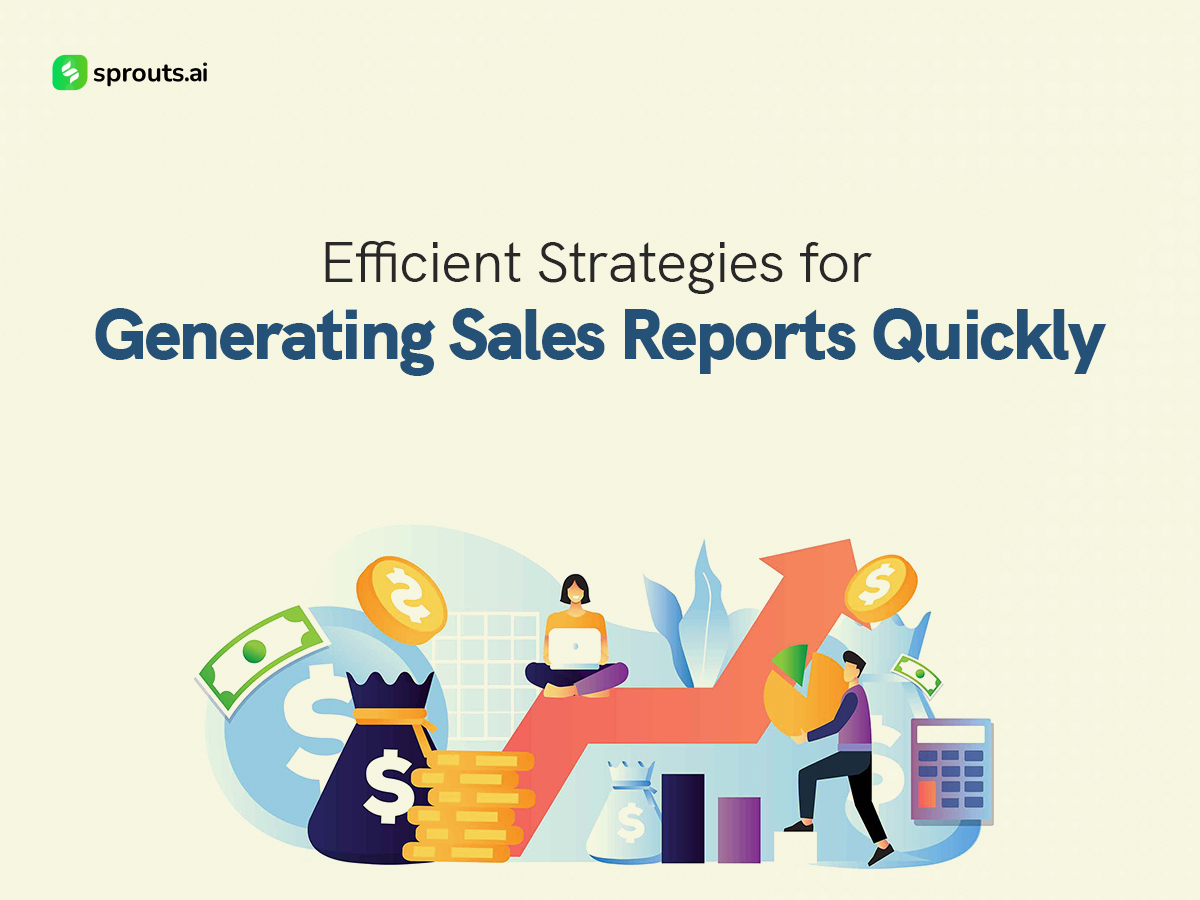Business thrives on timely information. Sales reports are your window into performance, trends, and future sales potential – a powerful tool for making smarter choices. But generating these reports can often be a time-consuming burden. This blog explores efficient strategies to create sales reports quickly, giving you the agility to stay ahead of the competition and make strategic business decisions.
- Define Clear Objectives: Before diving into generating sales reports, it’s essential to define clear objectives. What insights are you looking to gain from these reports? Are you focusing on overall sales performance, regional trends, product-specific metrics, or customer segmentation? By clearly defining your objectives, you can streamline the report generation process and ensure that the reports provide actionable insights tailored to your specific needs.
- Utilize Automated Tools: There are a plethora of automated tools and software available to streamline the process of generating sales reports. These tools can help automate data collection, analysis, and report generation, significantly reducing the time and effort required. Whether it’s a CRM system, business intelligence software, or specialized reporting tools, investing in the right technology can make a world of difference in generating sales reports quickly and efficiently.
- Standardize Data Sources: One of the biggest challenges in generating sales reports is dealing with disparate data sources scattered across different systems and platforms. To streamline the process, it’s crucial to standardize data sources and ensure that all relevant data is consolidated into a single source of truth. Whether it’s sales data from your CRM system, transaction data from your e-commerce platform, or customer data from your marketing automation tool, integrating these data sources can simplify the report generation process and ensure data accuracy.
- Develop Templates: Developing standardized report templates can save a significant amount of time and effort in generating sales reports. Instead of starting from scratch every time, create templates for different types of reports, such as weekly sales performance reports, monthly revenue summaries, or quarterly sales forecasts. These templates should include predefined metrics, charts, and visualizations that provide a snapshot of key performance indicators, making it easier to generate reports quickly and consistently.
- Automate Report Scheduling: Take advantage of scheduling features available in reporting tools to automate the generation and distribution of sales reports. Whether it’s scheduling weekly email reports to stakeholders or setting up automated dashboard updates, automating report scheduling can ensure that stakeholders have access to timely insights without manual intervention. This not only saves time but also ensures that stakeholders are always informed about the latest sales performance metrics.
- Focus on Key Metrics: In the vast sea of data, it’s easy to get overwhelmed by the sheer volume of information available. To generate sales reports quickly and efficiently, focus on key metrics that matter most to your business objectives. Whether it’s sales revenue, conversion rates, average order value, or customer acquisition cost, identify the critical KPIs that drive your business forward and prioritize them in your reports. By focusing on key metrics, you can avoid information overload and provide stakeholders with actionable insights that drive decision-making.
- Implement Real-Time Reporting: Traditional sales reporting processes often involve manually pulling data from various sources and compiling it into reports, which can result in delays and outdated information. Instead, consider implementing real-time reporting solutions that provide instant access to up-to-date sales data and insights. Whether it’s integrating real-time data feeds into your reporting tools or leveraging APIs to access live data from external sources, real-time reporting can help you stay agile and responsive in today’s fast-paced business environment.
- Empower Stakeholders with Self-Service Reporting: Empowering stakeholders with self-service reporting capabilities can further streamline the process of generating sales reports. Provide stakeholders with access to intuitive reporting tools and dashboards that allow them to explore data, visualize trends, and generate custom reports on-demand. By enabling self-service reporting, you can reduce the burden on your reporting team and empower stakeholders to access the insights they need, when they need them.
Generating sales reports quickly and efficiently is essential for staying competitive. By defining clear objectives, leveraging automated tools, standardizing data sources, developing templates, automating report scheduling, focusing on key metrics, implementing real-time reporting, and empowering stakeholders with self-service reporting capabilities, you can streamline the process and ensure that stakeholders have access to timely insights that drive informed decision-making. With these efficient strategies in place, you can stay ahead of the curve and propel your business towards success.

